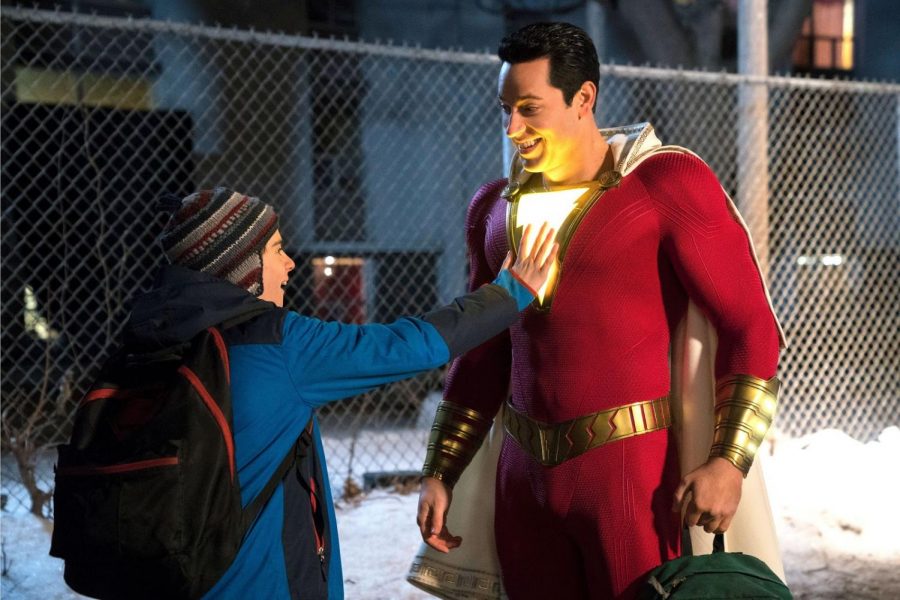A jolt of light-heartedness
After years of delays for the production of the superhero film, “Shazam!,” the seventh installment of the DC Extended Universe proved to be worth the wait. The movie brings a light-hearted and goofy approach that is refreshing to see given the studio’s usual dark approach to its movies.
The film successfully introduces its origins without being boring—a young Dr. Sivana (Mark Strong) is transported to a temple by the ancient wizard Shazam (Djimon Hounsou), who is looking for a new champion that is “pure of heart” to carry on his duties of keeping the seven deadly sins in check. It then transitions to the present, with foster child Billy Batson (Asher Angel) following the same ritual that Sivana went through, and successfully gaining the powers of Shazam.
Shazam’s powers are similar to those of Superman, but the characterization of the two are complete opposites. While Shazam can be compared to the studio’s “Man of Steel” in terms of the storyline, Shazam carries more of a comic-book feel to it, seen by the superhero’s obnoxious white cape and costume as well as the film’s music score. The soundtrack features a melodic and magical old-school superhero theme, evoking joy and hope.
These lighter elements make the film enjoyable, hinting to viewers that while the film follows a typical superhero storyboard, it is meant to be funny and light-hearted.
As a result, the multiple clashes between Shazam and Sivana throughout the movie are not as dull, leaving viewers anxious for their next comedic interaction. The main source of humor in the movie is Batson being in Shazam’s, as Shazam has the classic and exaggerated physique of a comic-book superhero that contrast Batson’s childish mentality.
From learning and discovering more about his new superpowers with foster brother Freddy Freeman (Jack Dylan Grazer) to buying beer and going to clubs as Shazam, the film is surprisingly comedic while also bringing home the concept and importance of family through the unique dynamic between Batson and Freeman. The various experiences that the two undergo show that the hero and villain dynamic does not necessarily need to be the center of movies all the time, which made for a refreshing and meaningful plot.
However, the film has some flaws involving the character transition between Batson and Shazam. While Batson is established as a weathered and overly cautious foster child, Shazam acts as the complete opposite of Batson, prideful and overly confident in everything he does. For example, superheroes such as Clark Kent and Bruce Wayne carry on their personalities while they are in other aliases, but Batson does not. Regardless of whether the stark contrast in acting was intentional, Angel did a phenomenal acting job, bringing Batson to life and giving the audience a relatable and well-rounded main character.
Although Shazam’s budget was on the lower end for the average superhero movie, the film comes off as very authentic, featuring well-developed characters and easy-to-follow comedy, continuing on DC’s successful film releases with previous big hit “Aquaman.”
Your donation will support the student journalists of Diamond Bar High School. Your contribution will allow us to purchase equipment and cover our annual website hosting costs.









